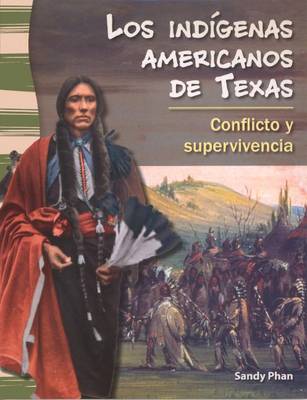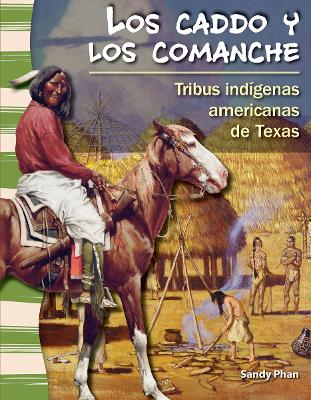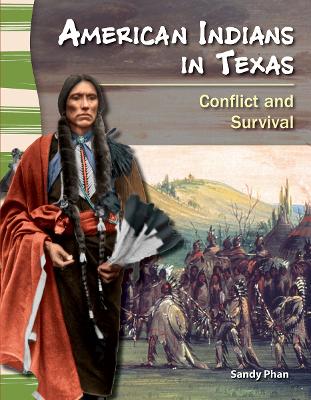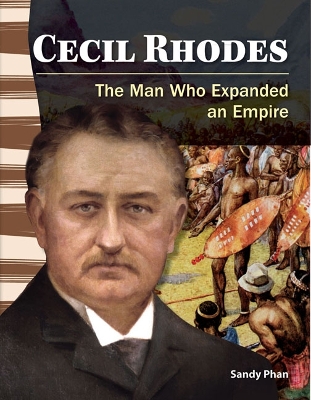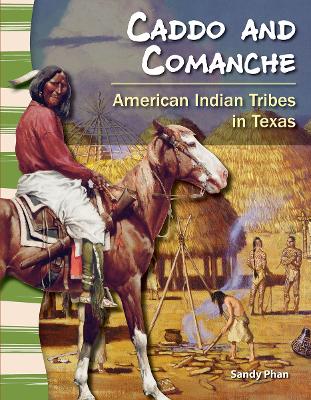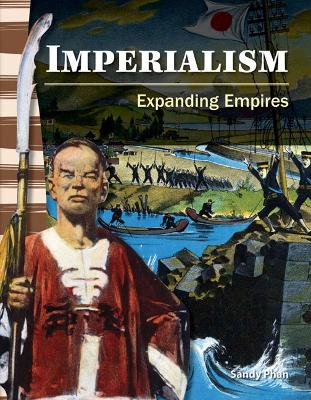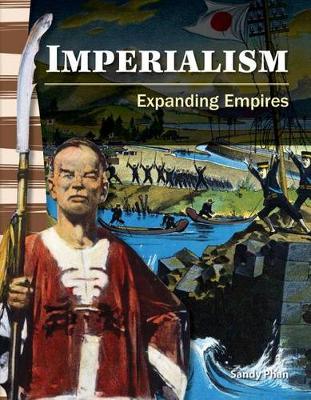Primary Source Readers
7 total works
Groups of American Indians had been living in the Texas region for thousands of years when American settlers decided to expand westward. This captivating book has been translated into Spanish and explores the history of American Indians in Texas and how each group found different ways to live in the region they inhabited. Readers will learn about a variety of tribes, including Karankawa tribe, Jumano, Caddo, Lipan Apache, and Shosone and discover how they struggled to survive European colonization, the Indian Removal Act, and American expansion. Other topics include the Dawes Act, Indian Civil Rights Act, and peace treaties. Through plenty of interesting and intriguing facts, engaging sidebars, an accommodating glossary and index, and supportive text, readers will be encouraged to learn and explore the history of the Indians of North America.
The Caddo and Comanche were two of the largest American Indian groups living in Texas before European contact. This Spanish-translated nonfiction title explores the history of the Caddo and Comanche, how they adapted to European colonists and American settlers, and the impact they made on Texas history. The Hasinai, Kadohadacho, Natchitoches, Comanche Nation of Oklahoma, and Shoshone are some of the tribes that readers will discover through engaging sidebars and facts, intriguing images, easy-to-read text, and a supportive glossary, index, and table of contents.
American Indians had been living in the Texas region for thousands of years when American settlers decided to expand westward. This captivating book explores Texas history and the history of American Indians and how each group found different ways to live in the region they inhabited. Readers will learn about various tribes including the Karankawa tribe, Jumano, Caddo, Lipan Apache, and Shoshone. Through interesting and intriguing facts, engaging sidebars, and supportive text, readers will discover how these tribes struggled to survive European colonization, the Indian Removal Act, and American expansion. Other topics include the Dawes Act, Indian Civil Rights Act, and peace treaties. Text features like a table of contents, glossary, and index are included to help readers better understand the content and vocabulary as they explore the history of the Indians of North America. This book also includes an in-class activity that allows students to think deeply about how the Comanche reacted to the European settlement.
In this biography, readers will discover the remarkable journey of Cecil Rhodes from England to the diamond mines, parliament houses, and battlefields of Africa. The stunning facts, vibrant images, engaging sidebars, and supportive text give readers a look into the Age of Imperialism and into Rhodes' life. Readers will learn about how he ventured into diamond mining, created the De Beers diamond company, started a scholarship fund, settled Rhodesia, and shaped policies that limited the rights of black South Africans through his belief in Social Darwinism. This book also includes text features like a table of contents, glossary, and index, as well as an in-class activity that allows students to think deeply to determine whether or not Rhodes was responsible for apartheid in South Africa.
The Caddo and Comanche were two of the largest American Indian tribes living in Texas before European contact. This nonfiction title explores the history of the Caddo and Comanche, how they adapted to European colonists and American settlers, and the impact they made on Texas history. Through engaging sidebars and facts, intriguing images, and easy-to-read text, readers will also be introduced to such tribes as the Hasinai, Kadohadacho, Natchitoches, Comanche Nation of Oklahoma, and Shoshone. Text features like a table of contents, glossary, and index are included to help readers better understand the content and vocabulary. This book also includes an in-class activity that helps students understand the differences between the Caddo and Comanche tribes.
Imperialism brought the world together and tore it apart. This book explains how the Industrial Revolution made an impact on Imperialism and how the Imperial powers warred with each other and the countries they conquered. With vivid images, fascinating facts, and easy-to-read text, readers will be engaged as they learn about some of the most important people and occurrences that helped shape the Age of Imperialism, including The Boxer Rebellion, The Boer Wars, Imperialism in China, and the Japanese Empire. This book also includes text features like a table of contents, glossary, and index, as well as a creative in-class activity that allows students to think critically to further understand imperialism.
Imperialism brought the world together and tore it apart. This title explains how the Industrial Revolution made an impact on Imperialism and how the Imperial powers warred with each other and the countries they conquered. Using vivid images, fascinating facts, and easy to read text, readers will learn about some of the most important people and occurrences that helped shape the Age of Imperialism, including The Boxer Rebellion, The Boer Wars, Imperialism in China, and the Japanese Empire. A glossary and index are provided for assistance in better understanding the content.
